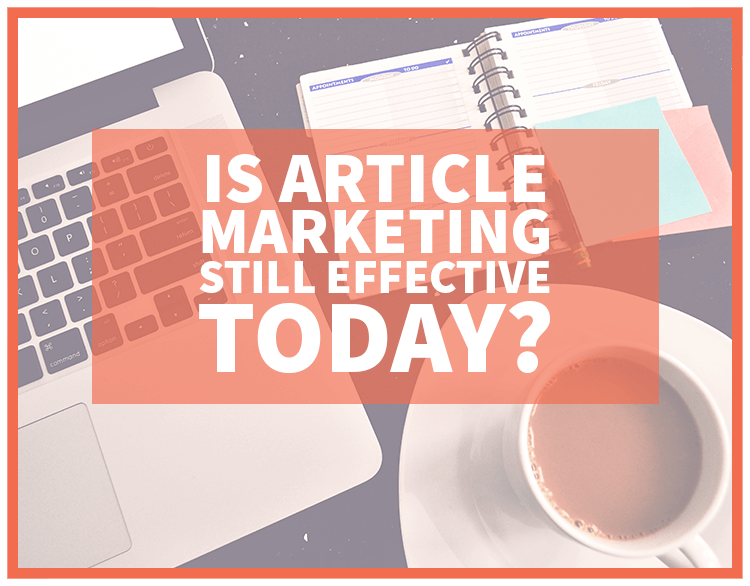
If your site is struggling to rank in the search engine results: you are losing money.
The big question is, what do you do to improve your status and click-through rates. It’s time-consuming but not complicated.
Here are 19 tips to help you create a search engine-friendly website.
1. Choose Relevant Keywords
Before you can begin to optimize your website, you first must consider what search phrases you want to use. This task may sound easy enough; after all, you want to be found for your services and products. However, there are so many relevant keywords that you can’t optimize for all of them.
For example, this article has chosen “how to create a search engine friendly website” as its primary keyword.
It’s important to choose relevant keywords with a high search volume and low competition. It will require that you do some research on the various keywords suitable for your company.
Yes, it’s a labor-intensive job, but rest assured, it will bring you results. Selecting your keywords is the first step in creating a great site, as the keywords will lay the foundation for your entire marketing campaign.
2. Utilize Title Tags
Now that you have your keywords, the next step is to optimize the appropriate page. First, add the keywords to your title tag. A title tag is quite simply the name of the page. When you put your mouse over the tab, it will display the page’s name.
The page title is an excellent way to tell the search engine what content you have. The search engine will use these tags to help rank your site. Title tags are so important because they have your relevant keywords incorporated into them, and they are the first thing a potential user sees.
3. Create URLs That Are User-Friendly
One of the finer details of making your webpage friendly to search engines, and which cannot be ignored, is the URL structure.
Sure, it’s not big on many expert’s to-do lists, but it dramatically affects the process. The URL needs to tell the person about the page without them looking any further. So it makes your page more user-friendly, and it is SEO friendly too.
Have you ever seen a poorly structured URL? It may look something like this:
www.this-is-an-example.com/gh/458594bdavdx/swsw.
The person clicking on this link will have no clue about the topic of the page.
By switching the URL to the following,
www.this-is-an-example.com/great-url-you-can-read
a person can easily see what the page offers, and they don’t have to click on the site for more information.
Remember the small details, as they are essential.
4. Utilize Heading Tags
A vital part of the optimization process is to add keywords to the header. The header is the area that tells what the page is about. If the keywords you selected are not relevant, you will quickly know.
The bounce rate will go up, and visitors’ average time on your landing page will drastically drop.
It’s vital to spend time and come up with the perfect keywords. Your target keywords should be in the H1 header. However, you may also include variations of the words in H2 or H3.
The key is to keep it natural and try not to over-stuff the landing pages with too many keywords. First of all, it doesn’t look good. And second, the search engines will penalize you for it.
5. Optimize those Images!
The need to optimize your images is not really a tip but rather an order. Save them to an SEO-friendly file, and when you need to put them on your site, all you have to do is enter the description. Again, it is one of the little things that people think doesn’t matter, especially if they have a whole website to operate.
The real reason is that people love to look at lots of pictures. So, by making sure they are correctly filed, searching for them the next time around will be a piece of cake.
You want to use numerous graphics and pictures to complete your site, but filing them will ensure that they are obtainable at a moment’s notice.
6. Mention The Keyword in the Content
Sometimes the most obvious things are the ones that people forget. Once you have your optimized pages completed, go through there a couple of times and make sure you have used your appropriate keywords in the content.
Read the content out loud a few times, and you will be surprised by what you discover. As a general rule of thumb, you should mention the keyword no more than once or twice per every 500 words.
Remember not to keyword stuff your content. The days of ranking with keyword stuffing are over. Search engines frown greatly on useless keywords.
7. Check for Duplicate Content
It would help if you made sure you don’t have any duplicate content. But, unfortunately, the search engines don’t like it, and they can also penalize your website for duplicates.
Never lift your content from someone else’s pages either, as this is considered to be plagiarism. If the search engines discover duplicate content, they will downgrade your website.
Consequently, duplicate content is found where there are two versions of the same page. It can be an oversight, but it can cost you big time in the rankings.
Product pages are an additional area where duplicate content is widespread. Thus, create exclusive descriptions for all of your products, and include other pertinent information.
A unique and descriptive product page will present essential data to your site visitors. It should include adding reviews from happy customers and sustaining content. You want your customers to have a pleasant visit when they come to your site.
8. 301 Redirects
A 301 redirect is the most efficient and search engine-friendly method to indicate that a page has been moved. It would be best to use this only when the page is “permanently” moved and you have replaced it with new content.
More often than not, people use a temporary 302 to redirect. However, this method does not pass the authority of the old page to the new page.
A temporary redirect is not the same as a permanent one, so use a 301, not a 302, whenever possible.
9. Maintain an XML Sitemap
One of the critical technical aspects of SEO is to have an XML sitemap. A sitemap will allow the search engines to quickly see the entire content of your website when they crawl.
It is additionally one of the easiest ways for you to give information about your website to the search engines; therefore, it needs to be one of the main priorities.
10. Robots.txt
If you have pages that you don’t want the search engine to crawl, then you need to use a robots.txt file. Likewise, if you’re going to keep some sensitive information private, you add this text file. It’s perfect for the checkout area of the site, where the privacy of data is a must.
11. You Must Have Meta Descriptions
Now that you’ve added your title tags, H1’s, and keywords in your content, it’s time to do the meta description. Unfortunately, many people don’t truly understand what a Meta description is, leaving it out.
This simple description of your page will allow the search engines to give potential viewers a snippet about your site. You must clearly describe what is on the page and have a call to action.
The goal here is to entice the reader to come to your site versus that of a competitor. It is the place where you get the chance to speak directly to your potential customers, and it makes a big difference overall.
If you think it’s unimportant, see how often you use a meta description before visiting a site.
12. Crush Competitors with Microdata
Microdata consists of things like schema and rich snippets. They help allow your site to stand out from your competitors.
It is a very crowded world, and even if your business niche is one that you think is not popular, you will be surprised by how many competitors you have.
You may need to research rich snippets and schema, but microdata can benefit every site.
13. Navigation
Navigation is a vital aspect of a site. Significantly, you build a clear pecking order, which will help when search engines crawl your site. Be sure to keep your customers’ journey at the front of your mind.
Because SEO is constantly changing, it’s becoming clear that the consumer’s needs should be the first consideration in every marketing strategy.
You want to succeed, but you don’t want your site to be penalized. Look at your pages carefully and make sure your customers can get around with ease. Is your checkout process simple? Are they able to quickly get from one page to the other? Be the customers and view it from their eyes.
14. Content Is King-So Start Writing
The algorithms used to rank pages in search engines are vastly different today than five years ago. The search engines want content that is pertinent to the topic matter.
It is going to rank them according to the site that has the best content. So if you are still keyword stuffing, you are doing it all wrong. Keyword stuffing could get your site demoted, not promoted.
It would help if you wrote an article pertinent to your site and something people would be interested in viewing. The title and meta description will get them to look at your page, but your content will keep them there.
15. Expand To Social Media
Social media is a gift to businesses. Whether it is a small mom-and-pop shop or a huge corporate conglomerate, it makes no difference. Social media is the marketing opportunity of a lifetime.
You can connect your web page with your social media accounts, which allows you to meet your customers where they are. Who doesn’t have a smartphone tuned into Twitter and Facebook all day long? Write content that takes them from their social media site to your page.
Offer coupons, free estimates, and other attractive offers to get them to see what you have to offer. The biggest absurdity in today’s business marketing plans is not using social media to help boost their revenues.
16. Make Your Site Mobile Friendly
Have you ever visited a website, and the content was formatted for desktop use only? It is not a good experience. No matter how much you wanted to read the page, you clicked back because it was not optimized for your phone. Many of your customers that visit your page will do so from their cell phone or tablet.
While you don’t have to open all options to a mobile phone, at least allowing some user-friendly services will help. You will drive customers away if they can only access you through a computer. With 5 billion people using a mobile phone, making your site mobile responsive is imperative.
17. Check Your Speed
One of the most annoying things about a site is that it takes too long to load. For example, have you ever tried Cyber Monday shopping, and your icon sits and spins?
You can check your speed by going to this website: http://developers.google.com/speed/pagespeed/insights/.
Try your speed and see if it is a hit or miss.
18. Core Web Vitals
Google announced recently that Core Web Vitals affect a website’s ranking in search results. Core Web Vitals is composed of Largest Contentful Paint (LCP), First Input Delay (FID), and Cumulative Layout Shift (CLS).
These terms sound technical, but they boil down to some simple concepts.
Largest Contentful Paint (LCP) – The moment when the browser first renders some meaningful content on the screen. It is when the most important item on the first visible screen appears.
First Input Delay (FID) – The point at which the first user input event can happen. Are there scripts loading that block a user from interacting with the page?
Cumulative Layout Shift (CLS) – Does your content shift while the page continues loading? This shift is a massive annoyance for your website visitors and can cause misclicks and frustration.
Use the Lighthouse feature in the Chrome browser to see how your website fares in Core Web Vitals. You can bet your competitors are working on this right now, and you should be looking at it too.
19. Don’t Get In A Hurry
The biggest problem that people have is that they expect their changes to work overnight. But, unfortunately, the changes that you made, while valuable, aren’t going to work in the blink of an eye.
If you have done all you are supposed to do, you must now sit back and wait. If you create your site with search engines in mind, it will bring outstanding results.
The only problem is there is no way to tell when. Be patient! If it doesn’t happen quickly, don’t try to fix it. You have to wait, and eventually, your hard work will pay off.
Building a fully optimized site for search engines and valuable for the reader can be time-consuming. However, by following these 19 steps, you will well be on your way to a bigger and better SEO quality site. Don’t leave out anything. From Meta descriptions to Title Tags, it’s all-important.


